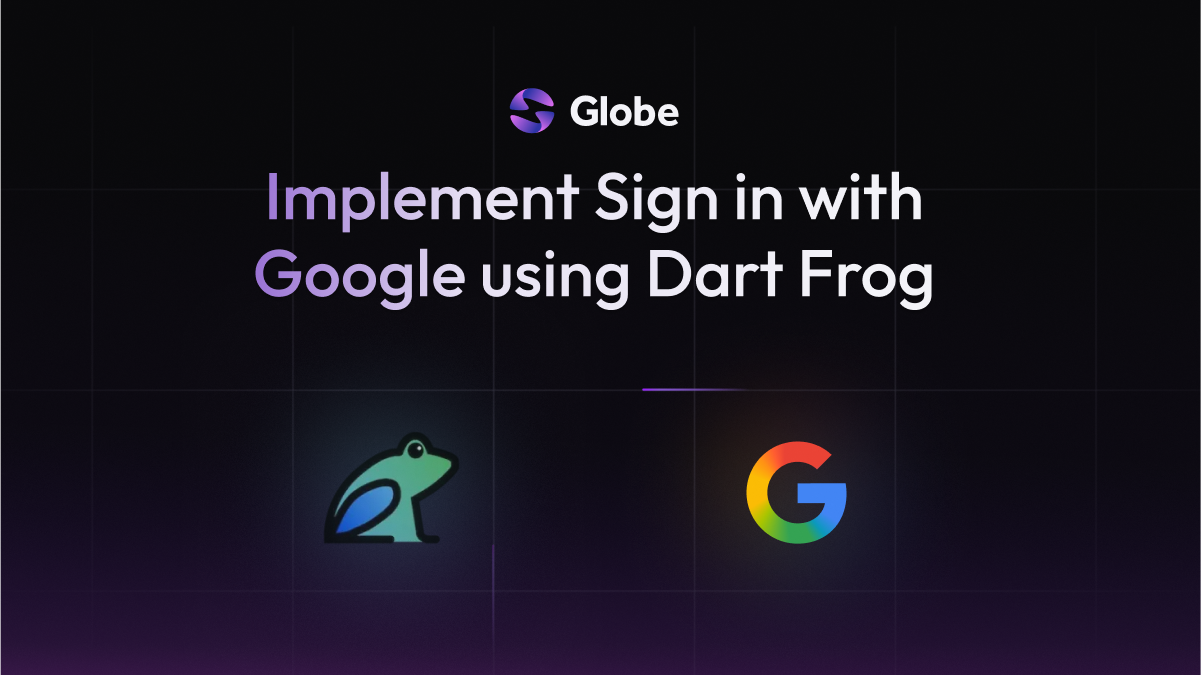Implement Sign in with Google using Dart Frog
Learn to build a complete OAuth 2.0 flow, allowing users to sign in to your application securely with their Google account.

Social logins are a must-have feature for modern applications. They provide a fast, trusted, and secure way for users to sign up and log in without creating a new set of credentials. Google is one of the most popular and trusted identity providers available.
This guide will walk you through building the complete backend flow for "Sign in with Google" using Dart Frog. You'll learn how to configure a Google Cloud project, handle the redirect flow, securely exchange an authorization code for an access token, and use that token to fetch a user's profile.
If you're new to the concepts behind OAuth, we recommend reading our foundational tutorial, What is OAuth 2.0?, before you start.
20 min read
Features Covered
- Configuring a Google Cloud OAuth 2.0 Client ID
- Handling OAuth 2.0 redirects in Dart Frog
- Securely loading secrets from a
.envfile using middleware - Using an access token to fetch user data from Google's API
Prerequisites
- A Google account: Sign up or log in to Google.
- Dart Frog CLI Installed: Install the Dart Frog CLI by running
dart pub global activate dart_frog_cli.
Step 1: Configure Your Google Cloud Credentials
First, you need to register your application with Google to get your API credentials.
- Go to the Google Cloud Console and create a new project.
- Navigate to APIs & Services > Credentials.
- Click + CREATE CREDENTIALS and select OAuth client ID.
- If prompted, click CONFIGURE CONSENT SCREEN.
- Choose External and click Create.
- Fill in the required fields: App name, User support email, and Developer contact information. Click SAVE AND CONTINUE through the next steps.
- Go back to APIs & Services > Credentials and repeat step 3.
- Select Web application as the Application type.
- Under Authorized redirect URIs, click + ADD URI and enter
http://localhost:8080/auth/callback. - Click CREATE.
- A pop-up will appear with your Client ID and Client Secret. Copy both and keep them safe.
Step 2: Create and Set Up Your Dart Frog Project
Now, let's create our Dart Frog backend and add the necessary dependencies.
-
Create the project:
dart_frog create google_auth_app cd google_auth_app -
Open the newly created
google_auth_appfolder in your favorite code editor. -
Add the dependencies for making API calls and loading environment variables:
dart pub add http dart pub add dotenv
Step 3: Store and Load Your Secrets
We will use a .env file for your secret credentials and a middleware to load them into your application's context.
-
In the root of your project, create a file named
.env. -
Add your Google credentials to this file:
GOOGLE_CLIENT_ID=your_client_id_here GOOGLE_CLIENT_SECRET=your_client_secret_here -
Important: Add
.envto your.gitignorefile. -
Next, create a root middleware to make these variables available to all routes. Create a file at
routes/middleware.dart:import 'package:dart_frog/dart_frog.dart'; import 'package:dotenv/dotenv.dart'; // Create a single, top-level instance of DotEnv and load the file. final _env = DotEnv(includePlatformEnvironment: true)..load(); Handler middleware(Handler handler) { // Provide the DotEnv instance to all routes. return handler.use(provider<DotEnv>((_) => _env)); }
Step 4: Create the Redirect Endpoint
This route will kick off the login process by redirecting the user to Google.
-
Create a new file at
routes/auth/google.dart. -
Add the following code, which correctly constructs the redirect response:
import 'dart:io'; import 'package:dart_frog/dart_frog.dart'; import 'package:dotenv/dotenv.dart'; Response onRequest(RequestContext context) { final env = context.read<DotEnv>(); final clientId = env['GOOGLE_CLIENT_ID']; final uri = Uri.https('accounts.google.com', '/o/oauth2/v2/auth', { 'client_id': clientId, 'redirect_uri': 'http://localhost:8080/auth/callback', 'response_type': 'code', 'scope': 'https://www.googleapis.com/auth/userinfo.profile https://www.googleapis.com/auth/userinfo.email', }); return Response( statusCode: HttpStatus.found, headers: { HttpHeaders.locationHeader: uri.toString(), }, ); }
Step 5: Create the Callback Endpoint
This is where Google redirects the user back after they approve your app.
-
Create a new file at
routes/auth/callback.dart. -
Add the following code:
import 'dart:convert'; import 'dart:io'; import 'package:dart_frog/dart_frog.dart'; import 'package:dotenv/dotenv.dart'; import 'package:http/http.dart' as http; Future<Response> onRequest(RequestContext context) async { final code = context.request.uri.queryParameters['code']; if (code == null) { return Response(statusCode: HttpStatus.badRequest, body: 'Missing code'); } final env = context.read<DotEnv>(); final clientId = env['GOOGLE_CLIENT_ID']; final clientSecret = env['GOOGLE_CLIENT_SECRET']; // Exchange the code for an access token. final tokenResponse = await http.post( Uri.parse('https://oauth2.googleapis.com/token'), body: { 'client_id': clientId, 'client_secret': clientSecret, 'code': code, 'grant_type': 'authorization_code', 'redirect_uri': 'http://localhost:8080/auth/callback', }, ); final tokenJson = jsonDecode(tokenResponse.body) as Map<String, dynamic>; final accessToken = tokenJson['access_token'] as String; // Use the access token to get the user's profile. final userResponse = await http.get( Uri.parse('https://www.googleapis.com/oauth2/v1/userinfo?alt=json'), headers: {'Authorization': 'Bearer $accessToken'}, ); final userJson = jsonDecode(userResponse.body) as Map<String, dynamic>; final username = userJson['name'] as String; return Response( body: '<html><h1>Success!</h1><p>Logged in as $username.</p></html>', headers: {'Content-Type': 'text/html'}, ); }
Step 6: Test the Full Flow
- Start the Dart Frog development server:
dart_frog dev - Open your web browser and navigate to:
http://localhost:8080/auth/google - You will be redirected to Google to log in and authorize the application.
- After authorizing, you will be redirected back to
http://localhost:8080/auth/callbackand see the "Success!" message with your Google username.
What's Next
- Get Started Quickly: Use our Google OAuth template to bootstrap your project with all the code from this guide and more.
- Implement GitHub Sign-In: See the same pattern in action by following our Implement Sign in with GitHub using Dart Frog guide
- Create a Session: Instead of just showing a success page, create a JWT for the user to manage a real session in your application.
Couldn't find the guide you need? Talk to us in Discord
